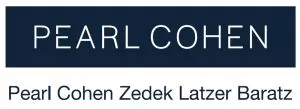On June 26, 2020, the Federal Circuit issued an opinion affirming a final written decision of the Patent Trial and Appeal Board (PTAB) that found certain claims of B/E Aerospace, Inc.'s aircraft lavatory-related patents obvious. B/E Aerospace, Inc. v. C&D Zodiac, Inc. (2019-1935, 2019-1936; Slip Op.)
The challenged patents related to space-saving technologies for aircraft enclosures such as lavatory enclosures, closets, and galleys. The patents were directed to space-saving modifications to the walls of aircraft enclosures; they were not directed to the structures contained within those walls. (Slip Op. at 2.)
The relevant claim limitations at issue on appeal recited a "first recess configured to receive at least a portion of the upwardly and aftwardly incline seat back of the passenger seat," and a "second recess configured to receive at least a portion of the aft extending seat support therein." In other words, an upper recess to receive the inclined seat-back, and a lower recess for the back legs ("seat support"). (Slip Op. at 3.)
The PTAB concluded that the claimed invention was obvious based upon two prior art references. Although neither of the prior art references disclosed the claimed "second recess," the PTAB "found that a skilled artisan would have found it obvious to further modify the [prior art references] combination to include the 'second recess' to receive passenger seat supports." (Slip Op. at 6.)
On appeal, the Federal Circuit affirmed the PTAB's conclusion that the claimed 'second recess' was "nothing more than the predictable application of known technology . . . because a person of skill in the art would have applied a variation of the first recess and would have seen the benefit of doing so." (Slip Op. at 9.)
In addition, the court affirmed the PTAB's conclusion that "it would have been a matter of common sense to incorporate a second recess in the [prior art references] combination." (Slip Op. at 10.) Quoting from the Supreme Court's seminal patent obviousness decision in KSR, the Federal Circuit reiterated that "rules that deny factfinders recourse to common sense are inconsistent with our case law." (Slip Op. at 11.) The court noted that "[a]fter KSR, we recognized that courts must consider common sense, common wisdom, and common knowledge in analyzing obviousness. (Id.) It cautioned, however, "that common sense cannot be used as a wholesale substitute for reasoned analysis and evidentiary support, especially when dealing with a limitation missing from the prior art references specified." (Id.)
The Federal Circuit concluded that in this case, "the Board's invocation of common sense was properly accompanied by reasoned analysis and evidentiary support. The Board dedicated more than eight pages of analysis to the 'second recess' limitation and relied on Mr. Anderson's detailed expert testimony. The Board noted Mr. Anderson's opinion that a person of ordinary skill in the art would recognize that as a seat is moved further aft the seat support necessarily is also moved further aft." (Slip Op. at 11.)
The court particularly noted that the simplicity of the technology aided in the conclusion of obviousness: "Here, just like in Perfect Web, the evidence shows that the technology of the claimed invention is simple. The patents relate to contoured walls that reduce or eliminate the gaps and volumes of space required between lavatory enclosures and adjacent structures. The missing claim limitation (the 'second recess') involves repetition of an existing element (the 'first recess') until success is achieved." (Slip Op. at 12.)
Originally published July 01, 2020.
The content of this article is intended to provide a general guide to the subject matter. Specialist advice should be sought about your specific circumstances.


